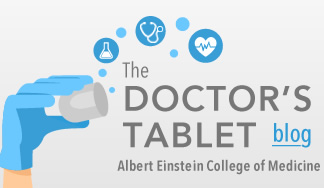FULL STORY
Molecules Identified That Help Propel Cancer Metastasis
April 7, 2011 – (BRONX, NY) – For many types of cancer, the original tumor itself is usually not deadly. Instead, it’s the spread of a tiny subpopulation of cells from the primary tumor to other parts of the body—the process known as metastasis—that all too often kills the patient. Now, researchers at Albert Einstein College of Medicine of Yeshiva University have identified two molecules that enable cancer to spread inside the body. These findings could eventually lead to therapies that prevent metastasis by inactivating the molecules.

Jose Javier Bravo-Cordero, Ph.D.The regulatory molecules are involved in forming invadopodia, the protrusions that enable tumor cells to turn metastatic – by becoming motile, degrading extracellular material, penetrating blood vessels and, ultimately, seeding themselves in other parts of the body.
The research appears in the April 7 online issue of Current Biology. The study’s senior author is John Condeelis, Ph.D., co-chair and professor of anatomy and structural biology, co-director of the Gruss Lipper Biophotonics Center and holder of the Judith and Burton P. Resnick Chair in Translational Research at Einstein.
Dr. Condeelis and his team identified two molecules (p190RhoGEF and p190RhoGAP) that regulate the activity of RhoC, an enzyme that plays a crucial role during tumor metastasis and that has been identified as a biomarker for invasive breast cancer.
“In vitro as well as in vivo studies have shown that RhoC’s activity is positively correlated with increased invasion and motility of tumor cells,” said corresponding author Jose Javier Bravo-Cordero, Ph.D., a postdoctoral fellow in the labs of Dr. Condeelis and assistant professor Louis Hodgson, Ph.D., in the Gruss Lipper Biophotonics Center and the department of anatomy and structural biology. “The new players we’ve identified as regulating RhoC could serve as therapeutic drug targets in efforts to block tumor metastasis.”
The other researchers in the Einstein study, all in the department of anatomy and structural biology, were M.D./Ph.D. student Matthew Oser, research technician Xiaoming Chen, Robert Eddy, Ph.D., and Dr. Hodgson. This study is the first to employ a new generation of G-protein biosensors that Dr. Hodgson developed. The title of the paper is “A novel spatiotemporal RhoC activation pathway locally regulates cofilin activity at invadopodia.”
The research was funded by the National Institutes of Health.
Other Top Stories
9/11 World Trade Center Exposure Linked to Heart Disease Among NYC Firefighters
On Becoming a Physician: New Einstein Students Receive White Coats and Stethoscopes
Novel Therapy for Acute Migraine Shows Promise in Phase 3 Clinical Trial
First Complete Wiring Diagram of an Animal's Nervous System
Multimillion Dollar NIH Grant to Help Reduce Opioid Use & Get Care to People Who Need It
NIH Grant Funds $23 Million Study of Diseases Affecting People Living with HIV
New TAILORx Data Guides Adjuvant Therapy in Younger Breast Cancer Patients
Einstein Celebrates Its 61st Commencement
Bolstering Biopsies: Testing Patients' Individual Cells to Guide Treatment



Tablet Blog